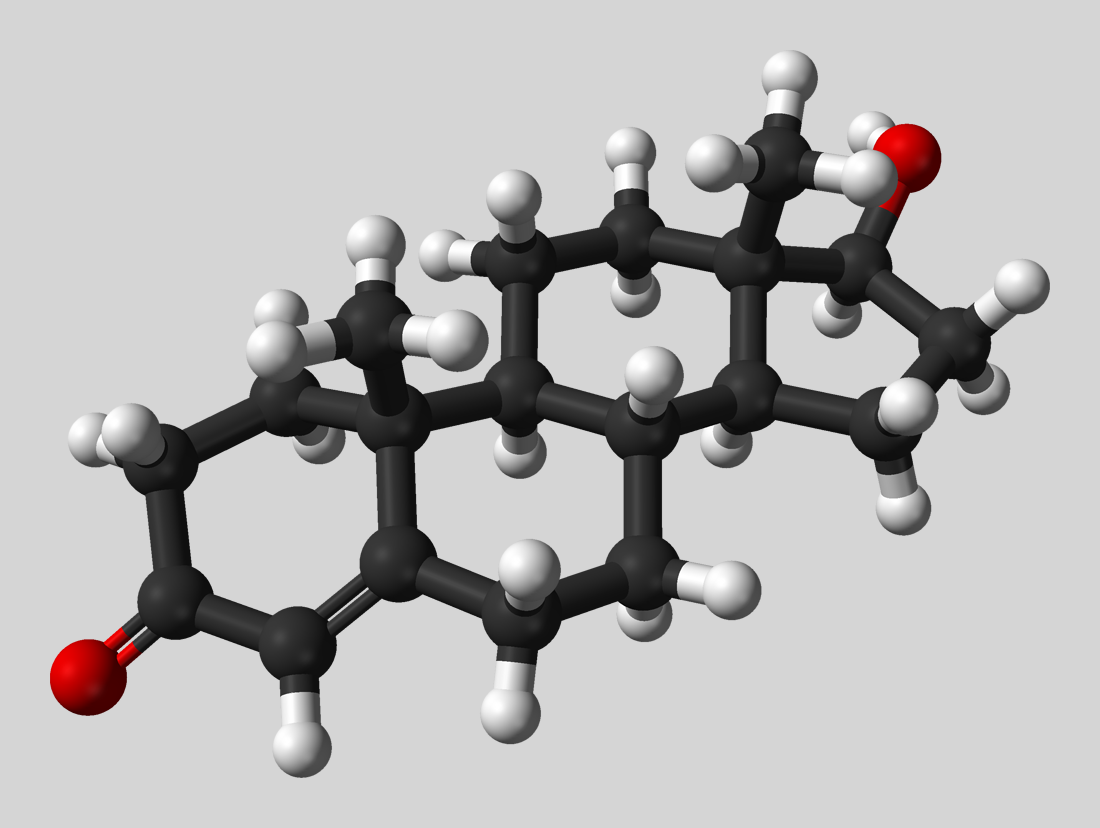As men age, low testosterone can accelerate certain aspects of aging. Testosterone plays an important part in men’s health. It stimulates muscle growth and maintenance, bone strength, red blood cells production, using fat for energy, libido, and erectile function, and can help enhance mood and cognition.
How does testosterone work in our body?
Testosterone is a steroid hormone (meaning it comes from cholesterol) and plays an essential role in male development and well-being. Production of testosterone is initiated by the secretion of luteinizing hormone from the pituitary gland in the brain. This hormone then binds the Leydig cells situated on the testes. This leads to the production of proteins necessary for a process is known as steroidogenesis where cholesterol taken from our blood is converted into testosterone.
Testosterone then goes into our blood to be transported to target tissues. During transport, it’s mainly bound to proteins called albumin or to sex hormone-binding globulin (SHBG). These are referred to as ‘bound’ testosterone and make up 98% of the total testosterone circulating in the blood.
In normal men, only 2% of total testosterone circulates freely. This is referred to as unbound or ‘free testosterone. When we get blood tests back for testosterone levels, they can be reported as bound, free, or expressed as the combined total. Conventionally, it’s been thought that only free testosterone is biologically active and works on target tissues, with the remaining bound ~98% just floating in the blood.
However, this isn’t true…
Though the movement of testosterone from the blood into cells in the brain or muscle is reduced when it’s bound to SHBG, that’s not the case for testosterone bound to albumin which is just over 50% of all bound protein. This means that albumin still allows for the biological action of testosterone in the brain and muscle, and other cells may still be able to use testosterone bound the SHBG.
What does testosterone do?
Once testosterone is in the target cell, it binds to specific receptor proteins. This process then leads to protein synthesis. In the case of muscle, testosterone goes to the nucleus of the muscle cell and can stimulate the production of more proteins for muscle growth. It can also increase the number of muscle cells, which for decades was something scientists didn’t think was possible.
This entire process may take up to several hours after steroid exposure, and this also involves regular exposure to testosterone. This means that it’s important to maintain healthy levels of testosterone in the blood throughout our lifetime since small fluctuations don’t have as much of an effect. In fact, throughout the day our testosterone levels change. They tend to be higher earlier in the day, and can easily decrease after meals.
This doesn’t mean that immediate changes in testosterone won’t impact us at all. Quite the contrary. Growing evidence is showing that testosterone can work in other ways with more immediate actions that can help men maintain bone strength, maintain a healthy cardiovascular system, and improve the ability of our muscles to contract.
Your optimum health takeaway
As men age, some might find that their testosterone levels decline. When testosterone levels are below expected clinical ranges, the condition is referred to as hypogonadism.
Aging men presenting hypogonadal testosterone levels can have symptoms of fatigue, decreased energy, decreased motivation, cognitive impairment, depression, irritability, and tiredness from a lack of oxygen supply. Low testosterone is also associated with type-2 diabetes, the metabolic syndrome and cardiovascular disease
Treating men who have type-2 diabetes who have low testosterone with replacement therapy may improve their metabolic status by lowering blood sugar and improving their insulin sensitivity.
Another crucial factor: testosterone levels can be affected by what we eat, how we eat, and how we exercise. In men, having elevated levels of body fat converts testosterone into estrogen, a process known as aromatization.
Having a science-driven health care team can help you determine if your levels are clinically low. The health care team can create a personalized approach and guide you on the best path to manage low testosterone to optimize your physical health and mental fitness. For many men, making changes in lifestyle and diet can result in substantial improvements in testosterone levels. In others, TRT (Testosterone Replacement Therapy) may be a necessary step.
References:
Bain J. Testosterone and the aging male: to treat or not to treat? Maturitas. 2010;66(1):16-22.
Bartels GL, van den Heuvel FM, van Veldhuisen DJ, van der Ent M, Remme WJ. Acute anti-ischemic effects of perindoprilat in men with coronary artery disease and their relation with left ventricular function. Am J Cardiol. 1999;83(3):332-6.
Dufau ML, Miyagawa Y, Takada S, Khanum A, Miyagawa H, Buczko E. Regulation of androgen synthesis: the late steroidogenic pathway. Steroids. 1997;62(1):128-32.
Heinlein CA, Chang C. Androgen receptor (AR) coregulators: an overview. Endocr Rev. 2002;23(2):175-200.
Hobbs CJ, Jones RE, Plymate SR. The effects of sex hormone binding globulin (SHBG) on testosterone transport into the cerebrospinal fluid. J Steroid Biochem Mol Biol. 1992;42(6):629-35.
Lieberherr M, Grosse B. Androgens increase intracellular calcium concentration and inositol 1,4,5-trisphosphate and diacylglycerol formation via a pertussis toxin-sensitive G-protein. J Biol Chem. 1994;269(10):7217-23.
Schwartz A, Patel BP, Vien S, McCrindle BW, Anderson GH, Hamilton J. Acute decrease in serum testosterone after a mixed glucose and protein beverage in obese peripubertal boys. Clin Endocrinol (Oxf). 2015;83(3):332-8.
Sinha-Hikim I, Roth SM, Lee MI, Bhasin S. Testosterone-induced muscle hypertrophy is associated with an increase in satellite cell number in healthy, young men. Am J Physiol Endocrinol Metab. 2003;285(1):E197-205.






